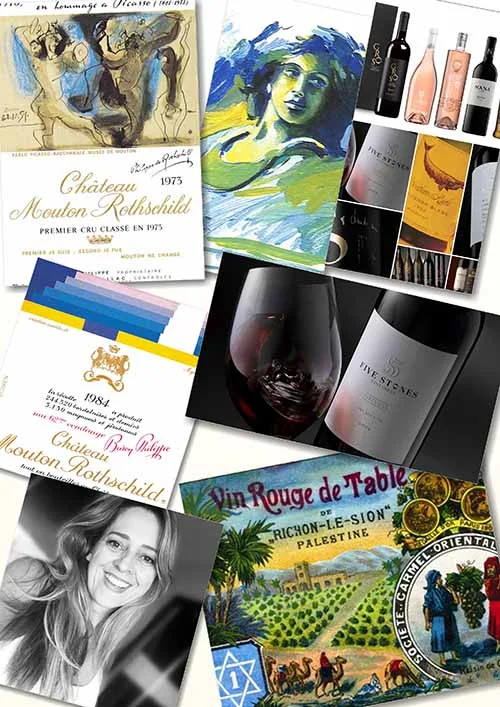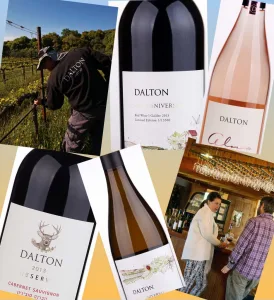In all the fluff surrounding wine, it will surprise many to know that the label is actually quite modern. The use of a glass bottle, wooden barrel or cork are far older. This is not to say that information about wine was not in demand. The Ancient Greeks and Romans were not beyond giving details of what the wine was, who owned it and where it was grown, but this was on amphorae not bottles.
In Victorian times, wines were sold in cask, kept in the cellar and the glass bottle was something that was used by the butler to bring a wine from the cellar to the table. There may have been a stamp on the bottle showing initials, but this designated the owners, rather than the contents. The bottles were then washed and used again. Most of the information was generic. I even remember on my grandfather’s sideboard decanters of port, sherry, whisky and brandy, identified by small pottery coat hanger shaped neck labels on a chain, but there was no apparent information or interest in brand or type.
Even the famous Bordeaux Chateaux, arguably the most well-known wine brands of all, were identified by branded corks before labels came into fashion. The real use of the glass bottle only started when bottles were made straight sided so that the wine could be stacked, cellared and aged. Labels then became a useful necessity, but it was only a realistic possibility when new glues became available. The purpose of the first labels was to provide the most basic information, probably the winery, region and vintage, and no more.
In Israel of the 19th century, wine was mainly sold in cask. Wines were not bottled. There was no kashrut supervision. The religious Jew bought from someone he knew to be a good Jew, who was usually a family member or a neighbor, or he made wine for himself. There was no Rabbinical supervision as we know today, until the 1920’s.
The first labels in Israel were bright, colorful in a kitschy way. They had their own kind of beauty. Amusingly all possible brand names were put on the label. I have a 100 year old Carmel bottle with the competing brand names Carmel, Palwin and Rishon Le Zion all on one label!
The first winery to really market an image through a label was Chateau Mouton Rothschild. That marketing genius Baron Philippe de Rothschild decided firstly to chateau bottle his wine, then unheard of, and then commissioned famous artists to paint an original work for the label. Artists of the caliber of Picasso and Chagall, even our own Agam, took part. Josmeyer from Alsace took it one step further with one of his wines, by using a painting reproduced on the label to represent the tasting note of the wine. Conversely, the wine represented the description of the painting. Can anything be more stylish and artistic than this? I have always loved this association between wine and art illustrated by a label. These labels of both Mouton Rothschild and Josmeyer were epiphanies in my personal wine awaking.
In modern times in Israel, there was no great investment in wine labels until the founding of the Golan Heights Winery. When the Yarden label came out, with its oil lamp logo, colorful mosaic and gold foil on cream paper, it was the first time a winery attempted to convey quality through the design of a label.
Interestingly the most successful wineries have had the fewest changes of labels over the years. Wines like Yarden, Castel, Margalit and Clos de Gat have barely changed their labels, while others like Barkan and Carmel have undergone numerous changes. They can never settle on a winning style and the marketing gimmick of needing something new, fuels wholesale changes every few years. In Israel, though there were many designers that are successful in producing wine labels, there are arguably no real specialists devoted to the art of the wine label. Wineries wanting something special went abroad. Flam Winery had their labels designed in Italy. Lately though, I have been seeing a number of labels that made me pause and think ‘wow!’ The same name keeps coming up as the designer: Annie Selby. She is the Label Lady. I had to meet her to receive an insight into the art of the label. https://annieselby.com/
Annie Selby is that Design and Branding specialist hitherto missing in Israel, with expertise in wine labels and winery branding. She shows an amazing portfolio, has untold experience in Israel and internationally, and shows innovation and creativity in the design of wine labels. She is a designer from South Africa and was drawn to wine simply because she was in wine country and when she put her toe in the water, realized she had a talent for it. When she got into wine it opened a window in her mind. It was a whole world for her. She had thought wine was a refuge for “pompous poets” but realized it was a world of passion, tastes, flavors and senses. She was drawn to wine like a moth to a flame. Now wineries seem to be drawn to her because of her rare talent. Her first label was for Anthony Hamilton Russell, a great South African producer. That gave us something to talk about because when I was with the Golan Heights Winery we shared an importer. Sometimes we presented our wines together.
She founded Annie Selby Design in Modiin. Her first label here was for Tishbi Winery. Since then she has had success after success, but all her creations are totally different. She does not have a house style, but interviews and empathies with the client in their own space, tastes the wine and finds the inner essence and ethos of the winery. She tries to capture what the person feels about his product and interpret it. She talks about “capturing the emotional heart of the brand”, which she represents in the small area known as the label. She creates with strategic positioning in mind both for the local as well as international market. Her skill is not just in design, but also production and implementation. Her expertise in wine means she has to be aware of problems that occur in bottling plants and at printers. The work surrounding the paper is also crucial: which paper to use and whether to enhance it with embossing and foiling.
She is also at her best when creating a total package. Five Stones is a new wine brand where the label, brochure and tasting notes are a tour de force. Stylish, created with an amazing attention to detail, but with a characteristic less is more philosophy.
She says Israel labels are behind international standards and longs for the day when Israel will have an identity like other countries do. We discussed how packaging is almost more important than the wine itself and how many people buy in the mass market according to the label. Never forget that Chateau Lafite without a label is a red wine!
Now with over 20 years’ experience in wine, she is contributing to a revolution in wine packaging. She tries to create clear, concise brand recognition which is strong and recognizable. The results do not only affect image and perception of quality, (sometimes perceived quality is more effective than actual quality), but also sales. She talks of a change of one label resulting in a 700% increase in sales over the same wine with the old label. Unlike many artists she is practical. So many designers fall in love with their own creations, often to the detriment of the client. Selbie says with candour “if it is a great label but can’t be used or doesn’t work, then it is no good.”
The Label Lady is bright, sassy, funny and yet totally engrossed in her work to the exclusion of everything else. She immerses herself in a subject, absorbs all the information about the winery, person and place, wrestles with her own creative juices, until an idea clicks. A new production is like giving birth. It is a result after a long process with no short cuts. A label for her is never just an image on a bit of paper. Each brand has its own character. According to the Selbie, looking at a label is like opening the bottle. It should reveal something of itself.
She mentions words like elegance and sophistication again and again and thinks it is important even in a less expensive bottle. This is so true. The person buying a bottle of Carmel Selected, Barkan Classic or Segal for Shabbat may be making a rare purchase, which for them is like someone else purchasing Castel Grand Vin or Margalit Enigma. For them it is a special purchase and they should feel good about it.
We have certainly come a long way since the label was generic or was considered merely a source of information. Next time you are browsing in a wine store, thinking about the work of the grower in the vineyard and the winemaker at the winery, give some consideration also to the label artist, whose canvas is small, but the beauty, intricacy and information provided on the label, attracts attention and influences the consumer. It may even convey the character of what is inside the bottle. Even if not, take the time to enjoy and appreciate the art of the label. https://annieselby.com/
Adam Montefiore has been advancing Israeli wines for over thirty years. He is known as ‘the ambassador of Israeli wine.’ He is the wine writer for the Jerusalem Post. www.adammontefiore.com


















